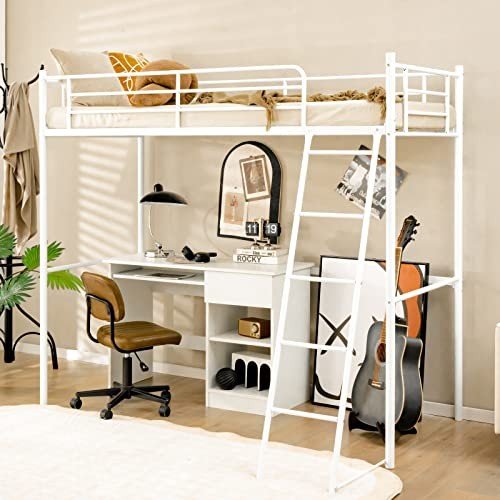20 Fun Details About Bunks
Bunks: The Versatile Space-Saving Solution for Modern Living
In today's busy world, where city home are shrinking and the demand for adaptability and usefulness is increasing, bunks have become a popular service. Bunks are not simply a type of bed; they represent an advanced approach to taking full advantage of space, promoting social interaction, and supplying comfortable sleeping plans. This post will explore the different kinds of bunks offered, their advantages, and how they can change both small and big living areas.
Understanding Bunks: What Are They?
Bunks, typically referred to as bunk beds, are two or more beds stacked on top of each other. They are designed to save flooring space, making them ideal for children's spaces, hostels, and even adult living situations. Bunk beds are available in various designs and configurations, from conventional models to modern, designer analyses.
Kinds of Bunks
Kind of Bunk
Description
Twin-over-Twin
Two twin beds stacked on top of each other. Ideal for kids sharing a space.
Twin-over-Full
A twin bed on leading and a bigger complete bed on the bottom. Great for accommodating visitors.
Full-over-Full
Two full-sized beds stacked together. Perfect for older children or adults.
L-Shaped Bunk Bed
Beds are organized in an L shape, permitting a corner placement and added space beneath.
Loft Beds
Just the top bunk is present, leaving space for a desk, couch, or storage underneath.
Triple Bunk Beds
Three beds stacked vertically, excellent for making the most of vertical space.
Benefits of Using Bunks
Space Efficiency: Bunks are designed to utilize vertical space, making them ideal for small bed rooms or apartments where floor space is limited.
Cost-Effective: Investing in a bunk bed can be more affordable than buying numerous different beds, specifically for growing households or those with regular visitors.
Flexible Designs: Many bunks come with add-ons, such as desks, storage drawers, or futons, permitting for flexible use of the area.
Social Interaction: Bunk beds welcome camaraderie among siblings and pals, promoting a sense of connection.
Creative Use of Space: Bunk beds motivate creativity in space design, permitting spirited styles and colorful decor that can make a bed room feel distinct and inviting.
Practical Considerations
Height Limitations: When selecting a bunk bed, it is important to think about the height of the ceiling in the space. Step the space to ensure there is sufficient clearance above the top bunk for safety and convenience.
Weight Restrictions: Each bunk has a specific weight limitation. Parents should evaluate the weight of those utilizing it, specifically in the case of adults or heavier teenagers sharing the bed.
Security Features: Features such as guardrails, durable ladders, and security certifications are crucial for making sure the bunk bed's safety, particularly for more youthful users.
Bunks for Various Living Situations
Household Homes
In household homes, bunks use a practical service for siblings sharing a space or accommodating sleepovers. Bunk beds can be stylishly incorporated into a child's space while offering sufficient room for play.
Hostels and Vacation Rentals
For hostels and trip rentals, bunk beds take full advantage of sleeping arrangements without compromising convenience. Such setups use a cost-efficient way to accommodate a larger number of visitors.
College Dormitories
In college dormitories, bunks help take advantage of the minimal square footage offered, enabling for more space to mingle and study.
Little Apartments
In small metropolitan houses, lofted bunk beds create extra space for living locations, offices, or storage, making life more manageable in compact environments.
Maintenance and Care of Bunks
Preserving a bunk bed is important for ensuring its durability. Here are a few suggestions:
Regular Inspections: Check for any loose screws or bolts and tighten them as essential.
Cleanliness: Dust and clean the bunks routinely to prevent allergens and ensure a tidy sleeping environment.
Mattress Care: Use a quality bed mattress protector to preserve hygiene and extend the life of the bed mattress.
Age Appropriateness: Upgrade to a larger, more tough bunk as kids grow or when the existing plan no longer fulfills the needs of its occupants.
Regularly Asked Questions (FAQs)
1. Are bunk beds safe for children?
Yes, bunk beds can be safe for children if they are built with security functions like guardrails and a steady ladder. Constantly supervise younger children when they are using bunk beds.
2. What age is appropriate for a child to sleep on the leading bunk?
Most manufacturers recommend that kids under the age of 6 ought to not sleep on the upper bunk due to security issues.
3. Just how much weight can bunk beds normally hold?
Weight capacities vary based upon the design and products but usually range from 200 to 400 pounds. Constantly check the manufacturer's standards.
4. Can bunk beds be separated into 2 single beds?
Numerous bunk beds are designed to be convertible, permitting them to be separated into two individual beds. It's important to check the product specs before buying.
5. What sort of bed mattress is best for a bunk bed?
A medium-firm bed mattress is frequently advised as it supplies adequate support without being too heavy or soft, which can position security concerns.
Bunks are more than just beds. They are innovative space-saving options that accommodate the needs of modern living. With various designs available, they provide convenience and functionality for households, guests, and people alike. By abbeykirk.top and upkeep, owners can guarantee that their bunk beds end up being a cherished part of their living areas for numerous years to come. Whether for lively children or accommodating visitors, bunk beds use a stylish and practical service to the obstacle of limited space.
